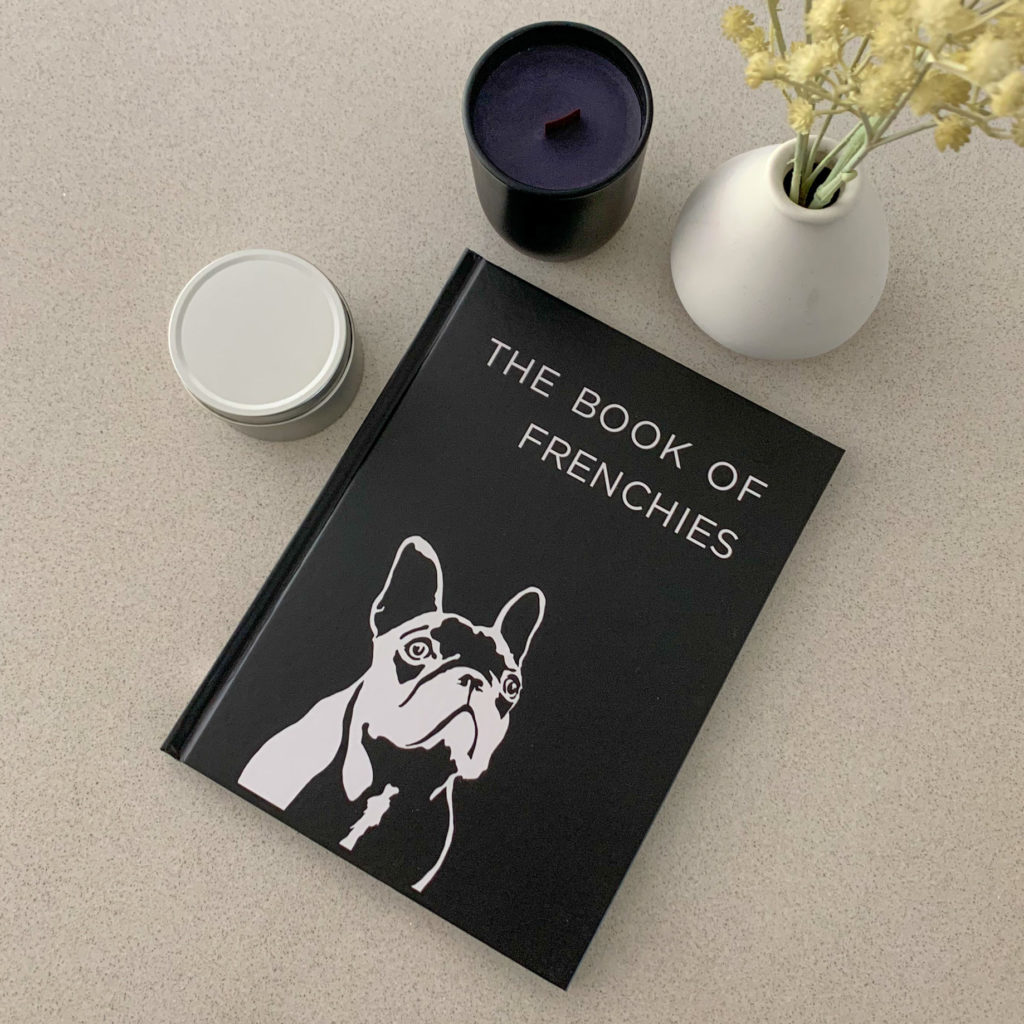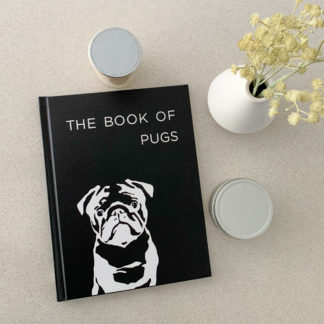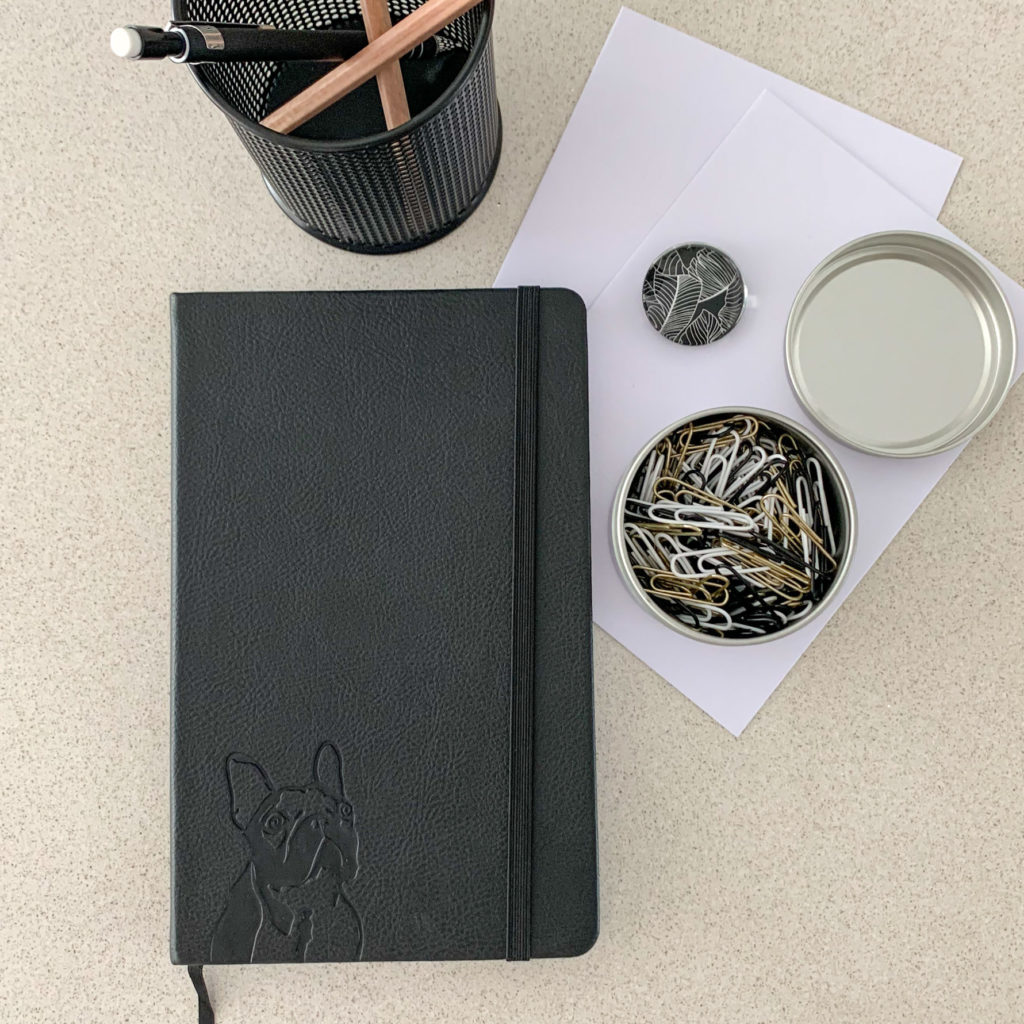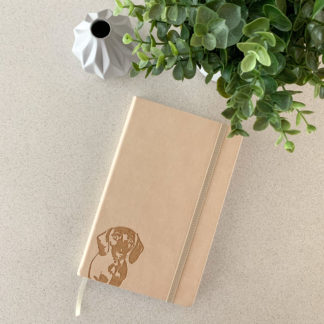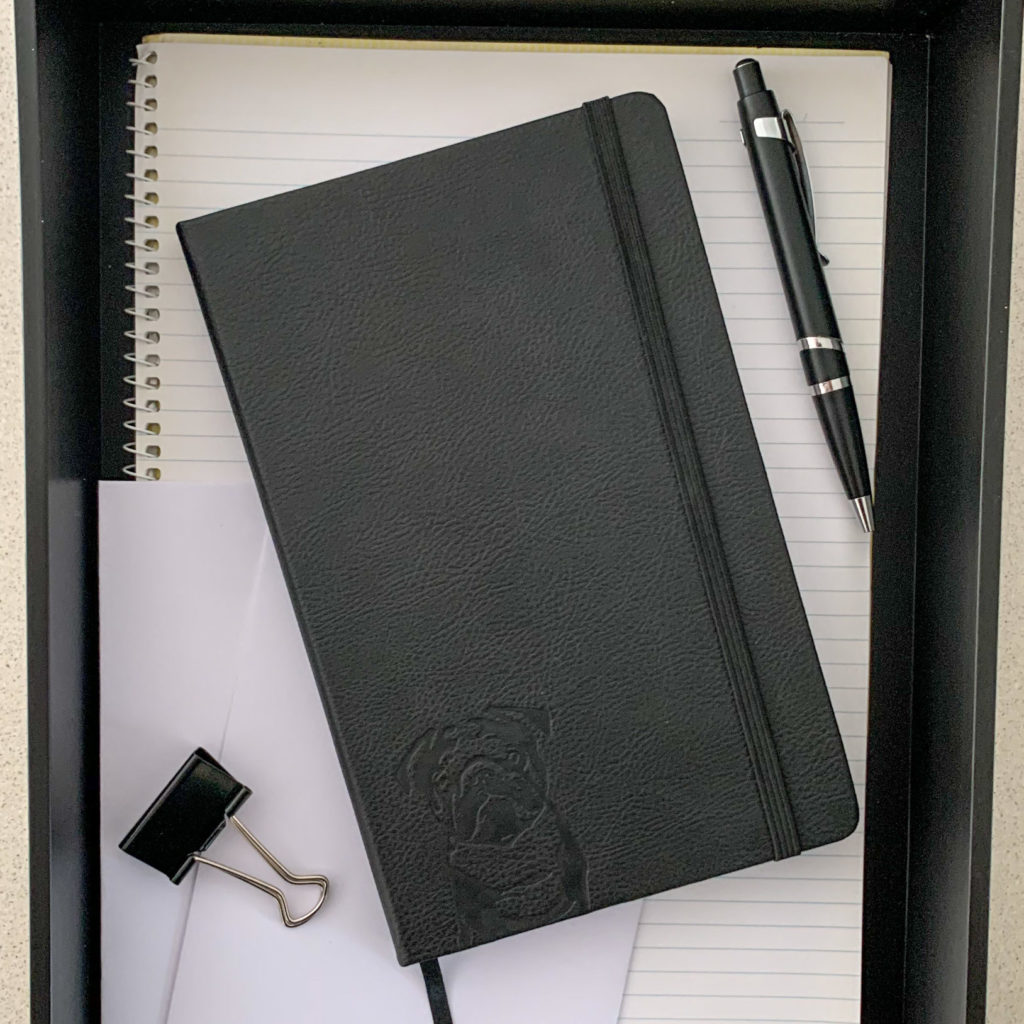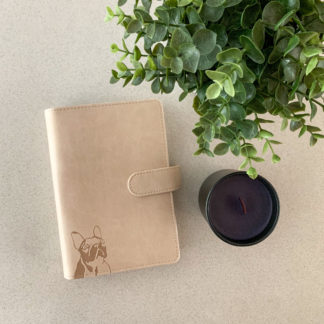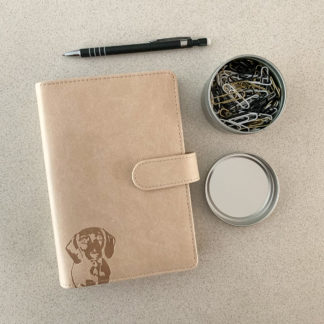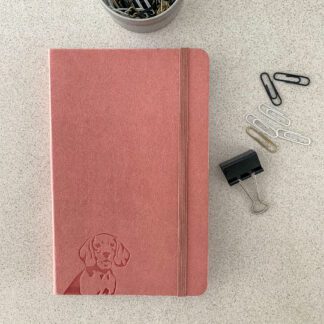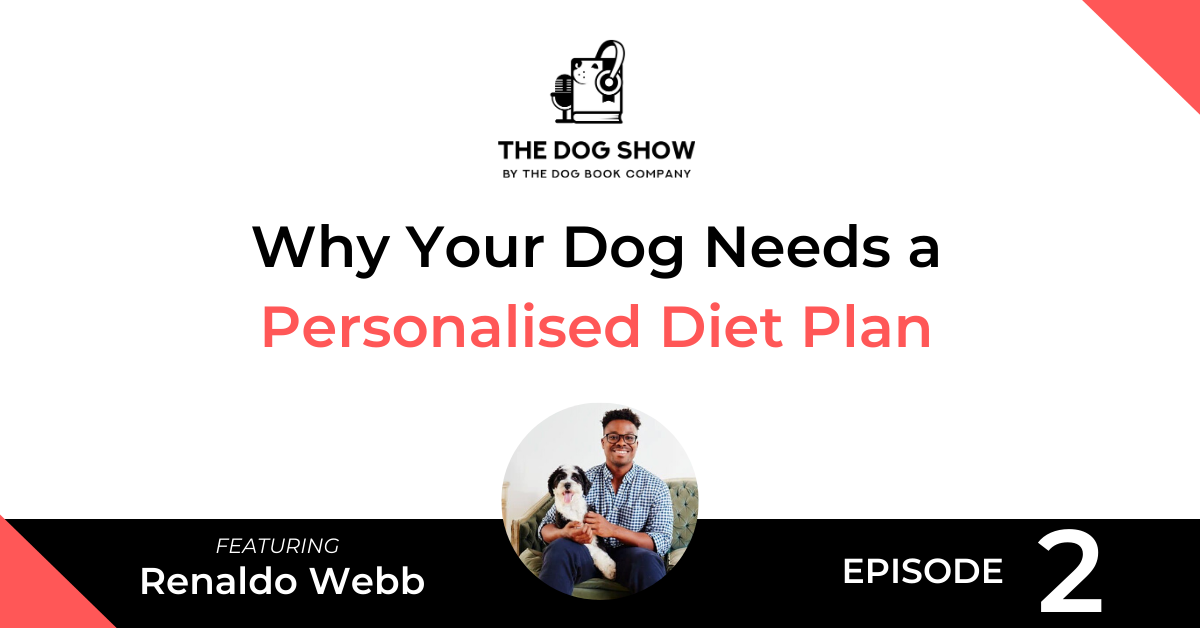
Have you ever thought about creating a personalised diet plan for your dog?
This episode of The Dog Show features Renaldo Webb. Renaldo is the Founder of Pet Plate, a dog food delivery service that provides personalised fresh-cooked, human-grade meals.
In the interview, we discuss why personalised meal plans are important for dogs, how fresh food and kibble differ, and how you can make the right food choices for your dog.
Listen
Watch
Read
Will: In today’s episode, I interview Renaldo Webb. Renaldo is the founder of Pet Plate, a dog food delivery service that provides personalized fresh-cooked human-grade meals for dogs. We talk about why personalized meal plans are important for dogs, the differences between kibble and fresh food, and how you can make the right food choices for your dog. I was also lucky enough to meet Renaldo’s dog, Cooper. Renaldo, thank you very much for coming on the call today.
Renaldo: Yeah, of course. Thank you for having me.
Will: Yeah. It’s great to have you. So, before we jump into the serious stuff about Pet Plate and personalized meal plans, I thought I’d just want to give a bit of a background about your history with dogs. So, I know I just found out before the call that your dog, Winston, actually passed away last year, so I’m very sorry about that, but you now have a new dog as well. So, do you wanna just tell me a little bit about Winston perhaps and your history with dogs?
Renaldo: Yeah, of course. And my new little guy is Cooper here who’s awesome. He’s been fun and, you know, now with the current climate and everyone working from home, he’s been super-happy, and he spends a lot of time with me. But, you know, in terms of dogs, I had one when I was a little kid, a black Lab, I believe, named Alex. And then, you know, as I got older, I got out of college. I lived with a bunch of roommates that had dogs. So, Alaskan Malamutes, other black Labs, you know, a Shiba Inu, etc. And, you know, I’ve always enjoyed hanging out with them and just thought they added something magical to the, you know, this overall, like, experience of, you know, living in an apartment or with roommates, etc.
So, it was always very natural for me to want one and my fiancé and I are enjoying taking care of Cooper. But in terms of, like, my own journey, like, outside of really being a dog owner and being involved in the pet industry, I was a consultant at a couple of large firms prior and they have some holdings across different pet companies, and I spent a lot of time as an operator helping out the leaders of these companies understand their products, improve their manufacturing capabilities, etc.. And just spent a lot of time in pet food factories and saw, you know, really how the sausage is made for a lack of a better term. And, you know, that really led me on my own journey for learning more about human-grade pet food, fresh-cooked pet food, and what the benefits of that may be.
Will: Okay. Yeah, cool. So, I think that answers the question about how you got into the dog food industry. So, quickly about Cooper, is there any fun…what breed is Cooper, sorry? You mentioned before the call.
Renaldo: Yeah. He’s a Mini Bernedoodle, so Bernese Mountain dog and Miniature Poodle. I believe Cooper’s mom and dad were both Mini Bernedoodles. So, I think they call that F2 but I’m not as familiar with the…kind of all the breeding lingo.
Will: Okay. Is there a fun fact about that breed that someone wouldn’t know? I mean, I hadn’t actually heard of that breed prior to the call so.
Renaldo: Yeah. No, I mean, I think just kind of like many of the doodles, they’re very smart. He’s hypoallergenic which is great. You know, particularly, we live in a small New York City apartment, so not a lot of fur everywhere. Grooming is pretty important, so, you know, we actually consider that a nice bonding time with Cooper. There’s all this training and play to make sure he’s fresh and doesn’t get any knots. But we’ve enjoyed, you know, that whole process and like I said, I think the poodle mixtures, they’re very, very smart, so teaching him tricks has also been very, very fun. Cooper is so special in the sense that he’s also, they call, I think they call it phantom breed. So, he’s basically he’s chocolate but he has other very light colors throughout his body and fur, so other light variations of brown. So, that’s been pretty fun, he has a really cute one on his butt.
Will: Okay, that’s cool.
Renaldo: So, you know, it’s been funny walking with all of the people around the street noticing that.
Will: Oh, that’s nice, that’s nice. Cool. So, let’s jump into the more serious stuff then. So, Pet Plate obviously, you guys do personalized meal plans for dog owners. Tell me a little bit more about why you think having a personalized meal plan is important for a dog.
Renaldo: Yeah. You know, I’ve always thought it was weird to go to a pet store and you just pick up a giant bag of kibble, and then you wonder how you need to feed your dog. You wonder if these are the right ingredients for your pet etc., given their specific, you know, health needs, and issues, and lifestyle. So, when I was thinking about Pet Plate, I really wanted to make sure that we were solving kind of needs and issues for a pet parent. And if you look at traditionally how it’s done, 68% of dogs are overweight or obese, allergies are a real big issue. A lot of people are confused in terms of what’s actually in their pet food. So, we try to address a lot of that, and luckily, some of that gets addressed through the personalization aspect.
We’ve personalized it based off of calories. There are probably other ways of doing it but we think calories is probably the strongest and, you know, based off of our understanding a little bit of information about your pet, you know, it’s easy then to understand how many calories they need, and then you can, you know, pre-portion the meal. You can also understand what allergies they may have and make sure those ingredients are not in the meals that are sent to them. So, there are a ton of benefits that just make pet parents’ lives easier and pet lives better, and that’s what we’re about.
Will: Okay. Cool. So, talk to me a bit about, I actually have…so I have a French Bulldog which struggles with allergies, food allergies and environment quality, all these things, right? We cook her food ourselves which is, like, a process, but…
Renaldo: Yeah. That’s how I started for my first dog, Winston, with cooking for him. You know, I believe it brought us closer together. You know, might have just been in my head but he enjoyed the food and it’s a fun process overall, but, you know, we try to make it simpler for pet parents with our service Pet Plate.
Will: Yeah. So, I guess for me as an owner, I had to figure all that out on myself in terms of, like, you know, realizing the allergies there and trying to figure out what she was allergic to, etc., etc. How would you recommend to a new dog owner that was trying to pick the right ingredients for a personalized meal plan? How do they go about doing that?
Renaldo: Yeah. I mean, I think obviously, most people get into looking at kind of the current food and trying to find what they call a limited ingredient diet or elimination diet. But I think you first have to look historically at what you’re feeding your pet over years and kind of look at, like, what are the major proteins they might have been getting, you know, what were the major ingredient? So, definitely do a diagnostic exercise to understand what they may have been introduced to over time, and that can help you with the next step of the process, which is the elimination diet, right? And you can, you know, keep it very simple, if you’re, you know, feeding kibble and etc., you can find a limited ingredient diet.
Obviously, if you, you know, decide to home cook for your pet or find a fresh-cooked delivery service, they use a much smaller subset of ingredients. So usually it’s very easy to get something that’s complete and balanced that is a very limited ingredient in that aspect. And then it’s a little bit of trial and error, right? Obviously, once you’ve transitioned your pup, you can then look to see, “Am I noticing as much scratching? Am I noticing as much growling around and anxiety from them?” And hopefully over time, over about one to two weeks, you can typically start to see allergy rules. And I believe the time period you have to wait is about one to two weeks, but obviously, I think you have to talk to your vet to truly understand that. And that’s just kind of the process I would think.
Will: Okay. Yeah, that’s helpful. You’ve mentioned kibble a few times. What are the main differences, I guess, from an owner’s perspective, like, kibble versus fresh food and why is that a big deal?
Renaldo: Yeah. And I would actually break it up into three categories in that aspect. You know, kibble and then a fresh pet food, you can have, you know, typical fresh pet food or you can have human-grade pet food. So, you know, I think the major difference with kibble is, you know, they’re using what you call the four Ds, so dead, dying, disease, and disabled meat, and it’s not good for human consumption. The food is cooked at very, very high temperatures, and much of the protein isn’t coming from the chicken that may be on the label etc. is coming from chicken meal, pea protein powder, and those types of things. So, it’s much less digestible and the metabolizable energy just really isn’t there. It’s almost as if you’re eating junk food versus a whole food diet. What do you feel better on? So, an allergy is issues with a lot, and I don’t wanna compare all kibble to junk food, but, you know, an allergy really does kind of stand. In general, whole foods are just more digestible and bio-available than their counterparts that are passively used in the process to make kibble.
Then when you look at just the typical fresh food diet, it may or may not be human-grade, and that’s the question that the producers of that food, for example, Pet Plate, made at a USDA facility. There are other fresh pet foods that are not and wouldn’t qualify as human grade, and they still use pretty poor-quality ingredients. But overall, those ingredients are easier to digest, etc. And, you know, as you move across that spectrum and you get closer to a company like Pet Plate or some of our competitors, you’ll see that the quality of the ingredients is really the focus. We work very closely with veterinary nutritionists to ensure that they are balanced in the right ratio that are appropriate for dogs. And we try to have a couple of different options. And, you know, it’s easier to have, you know, ingredient and meal variety in that sense than it is with kibble, because unfortunately, kibble has a very small subset of ingredients and types of ingredients they need to use. You have more flexibility when you’re just cooking real food and mixing it together appropriately for dogs.
Will: Yeah. Is there anything that comes down to the way it’s prepared as well or?
Renaldo: Yeah. With fresh food, typically, it’s, you know, prepared in a very similar way, but you can look at is it always fresh food or is it a flash frozen food, and shipped to you frozen? And then you have to think about how you’re getting the food. You’re going to a grocery store and picking it up. You know, it being refrigerated is probably okay. If it’s being shipped to you, then you have to worry, “Okay. Was the cold chain kept the entire time?” etc., so there are some delivery aspects you need to look at in terms of fresh food, but it takes…you know, we’re a smaller subset of companies and everyone is really doing, I think, a good job in terms of communicating with customers about what their food can do and the delivery process. And a lot of people have experience with that now as well from the human food side. [crosstalk 00:11:03] It’s been pretty funny when you look at human food trends versus pet food trends. Pet food is probably about 5 to 10 years behind depending on the actual trend. And so, it’s exciting to kind of see the analogs and how they kind of relate to each other.
Will: Yeah, definitely, definitely. So, do you notice any common mistakes that owners are making when they’re buying food for their dogs or?
Renaldo: I think the most important thing is reading the ingredient label and making sure you’re comfortable with what’s in there. Yeah. I’m not one of the, you know, big proponents of, “Oh, if you can’t pronounce it, then it must be bad.” So, there’s a lot of things people can’t pronounce that are probably just fine. Like, a lot of, like, vitamin B6 but I probably couldn’t tell you the scientific name for it and it is included in most dog food. But, you know, are you comfortable with feeding chicken meal, and where did that chicken meal come from, and what exactly is chicken meal? I think those are questions pet parents should ask themselves when they’re reading the label. And also, you should do the exact same with a fresh or human-grade pet food company as well and then make that decision.
I think after that is, like, truly understanding how to feed this food to your dog. You know, again, I always harp back to 60% of dogs are overweight are obese because people aren’t reading feeding instructions, right, or the feeding instructions on a bag of dog food are very general, right? It may span 10, 15, 20 pounds per size of the dog. And if your dog is supposed to be 20 pounds instead of 25 pounds, that’s a huge difference if you’re feeding them a little bit too much with the bag of dog food. So, really asking your vet, you know, what’s the specific caloric need, like, how many cups of food do they need to get and not eyeball it. Some of the personalized meal delivery services do the math and work for you which I believe is great, but, you know, it’s not to say you can’t do that on your own. You just have to put the time and energy in to do that.
Will: Yes. So, with Pet Plate, you have pre-portioned, right, all the meals or?
Renaldo: Exactly. We’ve pre-portioned all the meals based on your pet’s daily caloric need. So, we do the math for you working with our vet nutritionist to make sure we are understanding all of the pets that are coming into our system and we have a proprietary algorithm that then, based off of that information, so, breed, age, activity level, body condition, we can predict how many calories your pet needs.
Will: Well, that’s really good doing the science on it, doing the science on it.
Renaldo: Yeah. It’s been fun. It’s been fun, you know. I studied physics in college, so I enjoy the little bit of nerdy stuff I get to do.
Will: That’s cool. Okay. So, let’s just pretend for a moment I’m a dog owner, and I’ve been feeding my dog kibble for a period of time and I’ve started to become more educated about what is in the food and I’m looking for other options. I’ve come to the conclusion that I wanna get a meal delivery service just to try it out and see if my dog likes the food and whether it’s gonna be, you know, beneficial to them. What should I be looking for? Because I know there’s obviously a few competitors on the market now, Pet Plate were one of the leaders initially, but I imagine there’s some discrepancies that I should be looking out for.
Renaldo: Yeah. And, you know, it’s actually very interesting because there’s a ton of things to look at. I think first is if it’s human-grade or not. If you’re deciding to go with a meal delivery service, you’re not gonna be spending very much of a difference between people that aren’t human grade and people that are human grade. And I believe the safety and quality you get for knowing your food for your pet was made at a USDA facility alongside human food with the proper, you know, oversight and testing etc. is worth it. If you don’t do that, various pathogens etc. potentially could be there. You know, we’ve seen that in a couple of different industries. So, I think looking for a fresh-cooked human-grade item is kind of what I look at first. Next, I would look to make sure they’re working with a vet nutritionist and that they can speak about working with a vet nutritionist.
You know, it’s very easy to design a pet food, but is it being designed with the foresight of, “This is what can actually cause issues for dogs later in life,” or, “This is what puppies really need.” And, you know, we should be working with, and we do work with, a veterinary professional to make sure that we feel confident in the recommendations we’re making to our pet parent. I think next I would make sure that they’re giving you something that’s, you know, pre-portioned or portioned in some way that’s manageable for you. You know, feeding your dog the right amount of food is particularly important, being overweight can take away two years from their life, you know, being underweight, that’s no fun. So, you wanna make sure you’re feeding the right amounts. I would also look at their dedication to sustainability in ordering products. I think, it’s very important for everyone to do, you know, for them to try to do their bit to make sure we’re taking care of the planet, companies as well as the people. So, make sure that, you know, you’re not just throwing away random plastics, etc., etc. that they’ve thought through that in the product that they’re shipping to you. I think, you know, your footprint is very important.
So, I think those are kind of, you know, four quick basics to look at. From there, obviously, you can get in terms of price and, you know, what brand you feel represents you and your pup the best. Those are some personal preferences, but if you stick to those first four I mentioned to you, you will probably make a good decision.
Will: So, when you say human grade, I could literally taste. Have you tasted the food yourself?
Renaldo: Yeah. No. I eat the food all the time. It’s so funny when we do R&D test runs, etc., you know, we have the food sent in from our manufacturer. We lay it out and me and our COO and CEO, etc., we’ll all get around it and we’ll taste it and be like, “Okay. Yeah. This actually tastes pretty good.” You know, obviously, what tastes good for a human is very, very different than what tastes good for a dog, etc. and we’re not recommending you eat Pet Plate. But it does speak to our confidence in the safety and quality of our product. And theoretically, we could eat those foods for a very long period of time. I don’t think most people that are making kibble would eat that food for an extended period of time.
Will: No. Yeah, of course.
Renaldo: Yeah.
Will: All right. So, where can listeners find out more about you and Pet Plate? Where should they go?
Renaldo: Yeah. Well, you know, I think first, the best place to head to is our website, www.petplate.com. You can find out a ton of information on myself, how I started Pet Plate, and why I started Pet Plate as well as information about our veterinary nutritionist and all of our food. It’s a really simple, easy checkout process. And if you have any questions, you can just shoot us an email. And we have a great team of pet care professionals that are looking forward to answering any questions you may have.
Will: Perfect. Well, thanks very much, Renaldo. That was really, really great information there for the listeners about personalized meal plans.
Renaldo: No. Thank you so much. I think you’re doing a great service helping get the word out to pet parents as they have other options outside of what they might not find at the typical pet food store.
From Our Store
-
French Bulldog Coffee Table Book – The Book of Frenchies
From: AUD $59.99 Add to cart -
Dachshund Coffee Table Book – The Book of Dachshunds
From: AUD $59.99 Add to cart -
Pug Coffee Table Book – The Book of Pugs
AUD $59.99 Add to cart -
French Bulldog Notebook – A5, Hardcover, PU Leather, 100gsm Lined Pages, Bookmark (Three Colours)
AUD $34.99 Select options -
Dachshund Notebook – A5, Hardcover, PU Leather, 100gsm Lined Pages, Bookmark (Three Colours)
AUD $34.99 Select options -
Pug Notebook – A5, Hardcover, Black PU Leather, 100gsm Lined Pages, Bookmark (Three Colours)
AUD $34.99 Select options -
French Bulldog Planner – PU Leather Exterior, Metal Loose Leaf Ring Binder, 100gsm Paper (Two Colours)
AUD $64.99 Select options -
Corgi Notebook – A5, Hardcover, Black PU Leather, 100gsm Lined Pages, Bookmark (Three Colours)
AUD $34.99 Select options -
Dachshund Planner – PU Leather Exterior, Metal Loose Leaf Ring Binder, 100gsm Paper (Two Colours)
AUD $64.99 Select options -
Vizsla/Weimaraner Notebook – A5, Hardcover, PU Leather, 100gsm Lined Pages, Bookmark (Three Colours)
AUD $34.99 Select options -
Cavoodle Notebook – A5, Hardcover, Black PU Leather, 100gsm Lined Pages, Bookmark (Three Colours)
AUD $34.99 Select options -
Beagle Notebook – A5, Hardcover, PU Leather, 100gsm Lined Pages, Bookmark (Three Colours)
AUD $34.99 Select options

